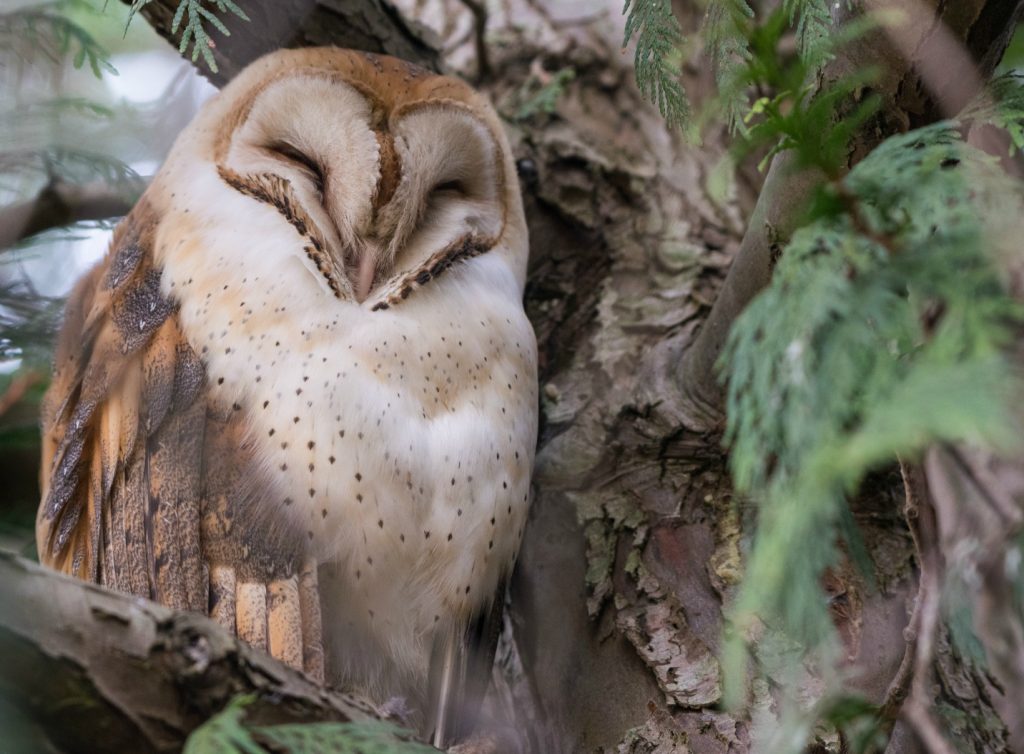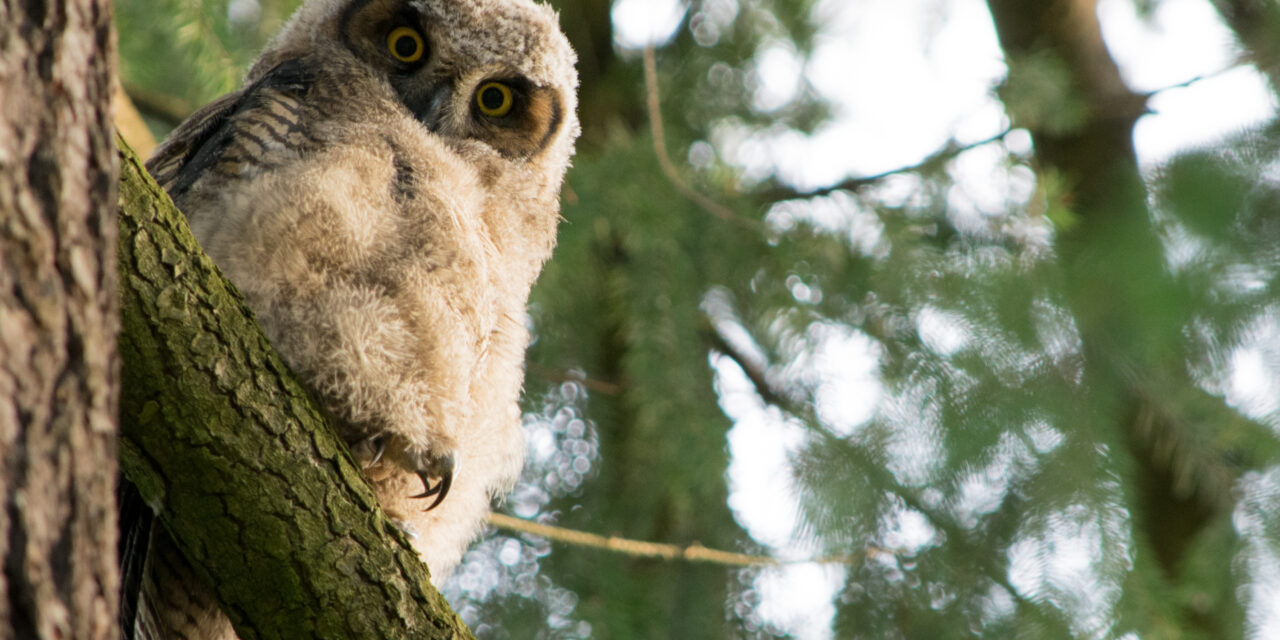Last spring, I watched two great horned owls raise their fluffy young at a nest site in Nanaimo. It was my first of many mesmerizing experiences with owls in the wild. Ever since, I’ve become obsessed with photographing them. Fifteen species have been recorded in British Columbia; in the last nine months, I’ve managed to photograph seven.

A juvenile barred owl (Strix varia) at Morrell Nature Sanctuary in Nanaimo. Barred owls weren’t recorded in British Columbia until 1943.

Under the December sun, a short-eared owl (Asio flammeus) shakes its feathers. Short-eared owls, unlike most owls, are highly active during daytime.

On a mountainside snag near Errington, a northern pygmy-owl (Glaucidium gnoma) swivels its head. At only 15–18 cm tall, northern pygmy-owls are about the same length as a banknote.

A long-eared owl (Asio otus) roosts near the Pacific Ocean in Delta. Each winter, Delta is home to several migrating long-eared owls.

A female snowy owl (Bubo scandiacus) surveys an open field. Snowy owls, native to the Arctic, are rare migrants to BC.

Hidden deep in a cedar tree, a barn owl (Tyto alba) roosts in solitude. In Canada, barn owls only breed in southern British Columbia and Ontario.
All photos by Spenser Smith. View more of his birding photography at Birds and Bark.

